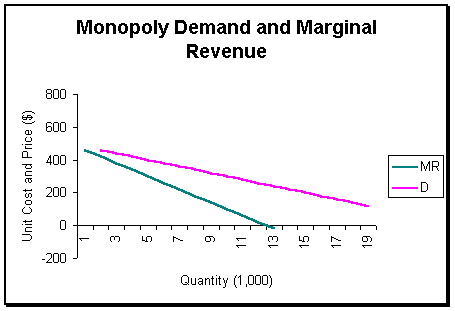Introduction
In economics, monopoly arises when there is only one single provider of a particular product or service in a given geographical area. Monopolies can be government regulated or natural market forces driven. In both situations businesses that monopolize the market are advantaged relative to competitors in markets where competition is involved. There are normally substantial barriers to entry of monopolized markets. Monopoly sets the market prices. Antitrust laws help in preventing the emergence of monopoly markets (Estrin and Laidler p. 207). Although markets are controlled best by the forces of demand and supply, governments’ intervention on monopolies to protect consumers from exploitation is actually necessary.
Government regulated monopoly
In this kind of regulation, the government sets rules and regulations to control the operations of firms that have monopoly power in their own industry (Witztum 314). The laws may also include attempts by the government deciding to monopolize certain sectors such as security. At best governments weaken the power of monopolies. This is inclusive of the barriers to competition that exists in monopolized markets. As discussed below, the government does this in several ways.
Price control
Monopolies control the price of goods or services they offer which may not always have alternative. For example, a water company that controls supply in a particular area. There is no alternative good to water. Customers have no choice but to buy from the company at any cost. A government directive on the maximum price that can be charged is a necessity to protect consumers when demand is too high. Control of natural resources such as minerals makes it easy for companies to be monopolies.
Large capital requirements
Companies sometimes attain monopoly status because of the large capital required to provide alternative sources of supply (Eaton and Eaton 147). An example is a company in power transmission and distribution. The cost of requisite infrastructure is enormous. The possibility of another investor venturing in that market is remote. Governments normally become the competing investor or take control of provision of such services. In so doing, it safeguards citizens from the insecurity of supply. Raising of large capital especially over large periods of time is easily done by governments than individuals or private institutions.
Legislation
Governments normally put in place regulations to govern the conduct of business monopolies (Nicholson 573). It is through reduction of anti-competitive agreements that markets allow for competition. These include encouraging production, technical development and investment in the affected sector. Sharing of markets and supply sources through trade agreements do protect against monopolies too. Application of same trading conditions to equivalent transactions makes the market fair.
Technology
In circumstances where the government has not invested in technology, private companies that are technologically advanced monopolize the markets. Subsidies on the kind of technology are provided in such cases to enhance competition.
Sensitive sectors
Sometimes governments decide to monopolize in certain sectors due to their sensitive nature. For example, in areas involving security or defense, provision of services may be limited to state agencies. Some countries ban armed private guards and allow such services to be provided only by the government.
Market regulated monopoly
In this method the government does not regulate the operations of monopolies in the market. The market is left to operate on a demand and supply course ceteris paribus. The monopolies determine price depending on market demands to maximize profits (Katz and Rosen 78). Any competitor in the market does not receive help from the government. The monopolies regulate supply in order to maintain prices that they prefer as market forces take their course. Typical demand and marginal revenue curve with hypothetical values in market controlled monopolies appears as in the graph of figure (a) shown. Unfair competition occurs as the monopolies can afford drastic under pricing of their products. This further ties the customers to them a move their competitors cannot afford. Non price action such as advertising is shelved. Since the monopolies are the sole suppliers, such practice is for public relations to avoid customer antagonism.

Demand does go down because in a free market demand is price sensitive and monopolies keep their prices on increasing trends. Marginal revenue reduces as extra units can only be sold by lowering price on all units sold. The upper portion of the curve in the figure is elastic while the lower part is inelastic. Monopolies prefer the elastic region since they can increase revenues by lowering prices.
Conclusion
In most cases monopolies arise due to unavoidable factors. These include, control of scarce resource or inputs and government created barriers in legislation. Network externalities, capital requirements and product pricing also lead to formation of monopolies. The monopolies like any other business aim to maximize profits in the industry involved. They employ various tactics to maintain the status quo and enjoy the competitive advantage. This however hurts consumers because of the higher prices. In some cases, service delivery is poor, but the monopolies are aware that consumers have no option. There is need therefore for governments to regulate monopolies in order to protect consumers from exploitation.
Reference
Eaton, C. and Eaton, D. Microeconomics. New York: Prentice Hall, 1989. Print.
Estrin, S. and Laidler, D. Introduction to microeconomics. California: Harvester Wheatsheaf, 1995. Print.
Katz, M. and Rosen, H. Microeconomics. Boston: McGraw-Hill, 1998. Print.
Nicholson, Walter. Microeconomic theory: basic principles and extensions. Texas: Dryden, 1998. Print.
Witztum, Amos. Economics: an analytical introduction. Oxford: Oxford University Press. 2005., Print.